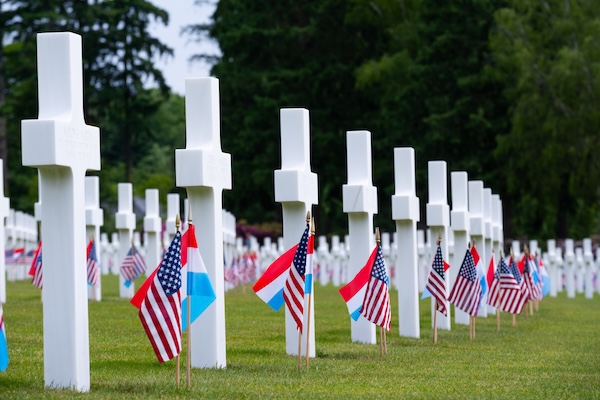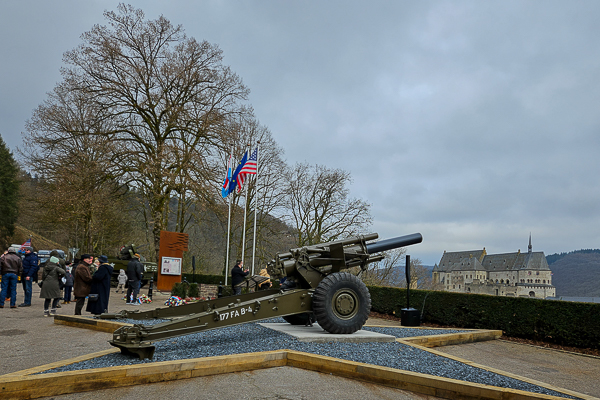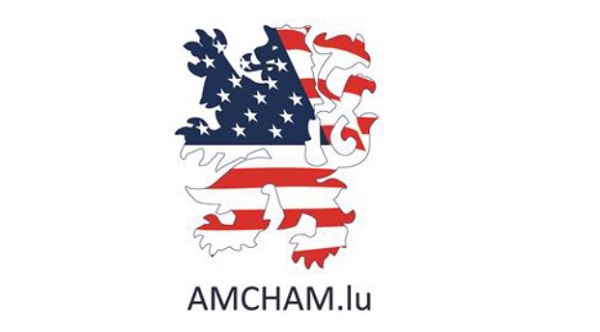 Luxembourg American Cemetery in Luxembourg-Hamm;
Credit: Ali Sahib, Chronicle.lu
Luxembourg American Cemetery in Luxembourg-Hamm;
Credit: Ali Sahib, Chronicle.lu
The Battle of the Bulge, also known as the Ardennes Offensive, was the last major German offensive on the Western Front during World War II. It took place from December 1944 to January 1945 and had a devastating impact on Luxembourg, particularly in the northern Ardennes (Éislek) region.
Historical Overview
The German objective was to split the Allied forces, push them away from Germany and seize strategic locations such as the Belgian port of Antwerp - in a last-ditch attempt to turn the tide of the war in their favour. The surprise attack led to intense fighting and significant civilian hardship during a bitterly cold winter.
Luxembourg had been under German occupation since May 1940, following its invasion. US troops initially liberated most of the country in September 1944, with the 5th Armoured Division freeing Luxembourg City on 10 September. However, scenes of joy quickly turned to devastation when, on 16 December 1944, Nazi Germany launched its “Wacht am Rhein” operation - a surprise counteroffensive in the Ardennes, a densely forested region spanning eastern Belgium and northern Luxembourg.
The ensuing Battle of the Bulge became the largest and bloodiest single battle fought by the United States during WWII, resulting in the deaths of around 19,000 American soldiers (80,000 total US casualties) - along with an estimated 100,000 German casualties (killed, wounded or missing). Northern Luxembourg became a key battleground, enduring heavy fighting, widespread destruction and the displacement of thousands of civilians. Approximately 3,000 Belgian and Luxembourgish civilians lost their lives in the battle.
Approximately 250,000 German soldiers crossed into the Ardennes, where towns and villages such as Clervaux, Marnach, Holzthum, Consthum, Weiler and Wahlhausen became strongholds of Allied resistance. Despite the defenders’ efforts, these places eventually fell after fierce fighting and destruction - Clervaux Castle, for example, was destroyed but later rebuilt. The German 7th Army gradually took control of several key towns, including Wiltz, Diekirch, Ettelbruck, Beaufort and Echternach, although progress was slower than planned.
By late December 1944, the German advance had stalled. In early January 1945, the Allies launched a counterattack, pushing the Germans back and regaining lost ground by the end of the month. Some towns remained under German control for longer: Echternach was liberated on 7 February and Vianden - the last Luxembourgish town to be freed - on 12 February 1945. Following the German retreat, the Allies resumed their broader offensive into Germany, launching the Rhineland Offensive and marking the final phase of the war in Western Europe.
Remembrance
The Luxembourg American Cemetery in Luxembourg-Hamm is the final resting place of over 5,000 US soldiers, many of whom died on Luxembourgish soil during the Battle of the Bulge. Among those buried here is General George S. Patton, who died in December 1945 following a car accident. He was commander of the US Third Army, which played a crucial role in both the Battle of the Bulge and the liberation of parts of Luxembourg. The General Patton Memorial Museum in Ettelbruck is named in his honour. Other museums such as the National Museum of Military History (MNHM) in Diekirch help keep the memory of the Battle of the Bulge alive, showcasing military equipment, personal stories and the broader impact on Luxembourg.
Several commemorative events took place in late 2024 and early 2025 to mark the 80th anniversary of the Battle of the Bulge and Luxembourg’s (double) liberation. The cemetery in Luxembourg-Hamm hosted an official ceremony on 14 December 2024, in the presence of Grand Duke Henri and Grand Duchess Maria Teresa, King Philippe and Queen Mathilde of the Belgians, members of the Luxembourg government (including Prime Minister Luc Frieden) and parliament. Other officials included then-Belgian Prime Minister Alexander De Croo, European Parliament President Roberta Metsola, an official US delegation, WWII veterans and members of the public and press.
Veteran testimonies, combined with the cold weather, brought home the harsh conditions endured by soldiers not far from the cemetery 80 years earlier. US veteran John D. “Jack” Foy, who served in the Battle of the Bulge as part of Company A, 37th Infantry Regiment, 87th Division, recalled the “bitter cold” and described his brothers in arms as “ordinary men who displayed extraordinary courage”. The event emphasised the continued importance of honouring sacrifice, preserving memory and defending freedom, democracy and peace.
Vianden marked the 80th anniversary of its liberation with a series of events in February 2025, including an official ceremony on 16 February attended by Grand Duke Henri and Grand Duchess Maria Teresa. This commemorative event included speeches from Vianden Mayor François Weyrich and Culture Minister Eric Thill, as well as a wreath-laying ceremony. Also on the agenda were lectures, concerts, a “Liberation Ball”, a military vehicle parade and re-enactment camps, which helped bring history to life in this small but historic town.
More than 80 years on, the Battle of the Bulge and the liberation of Luxembourg remain important chapters in the nation’s history and collective memory. Numerous monuments scattered throughout the Luxembourgish Ardennes commemorate this conflict. Its memory also lives on through commemorative ceremonies, museums and ongoing efforts to honour the sacrifices made by both military personnel and civilians - in the name of freedom - during this pivotal moment in history.

US monument “Op der Plank”, Vianden; Credit: Jazmin Campbell, Chronicle.lu








